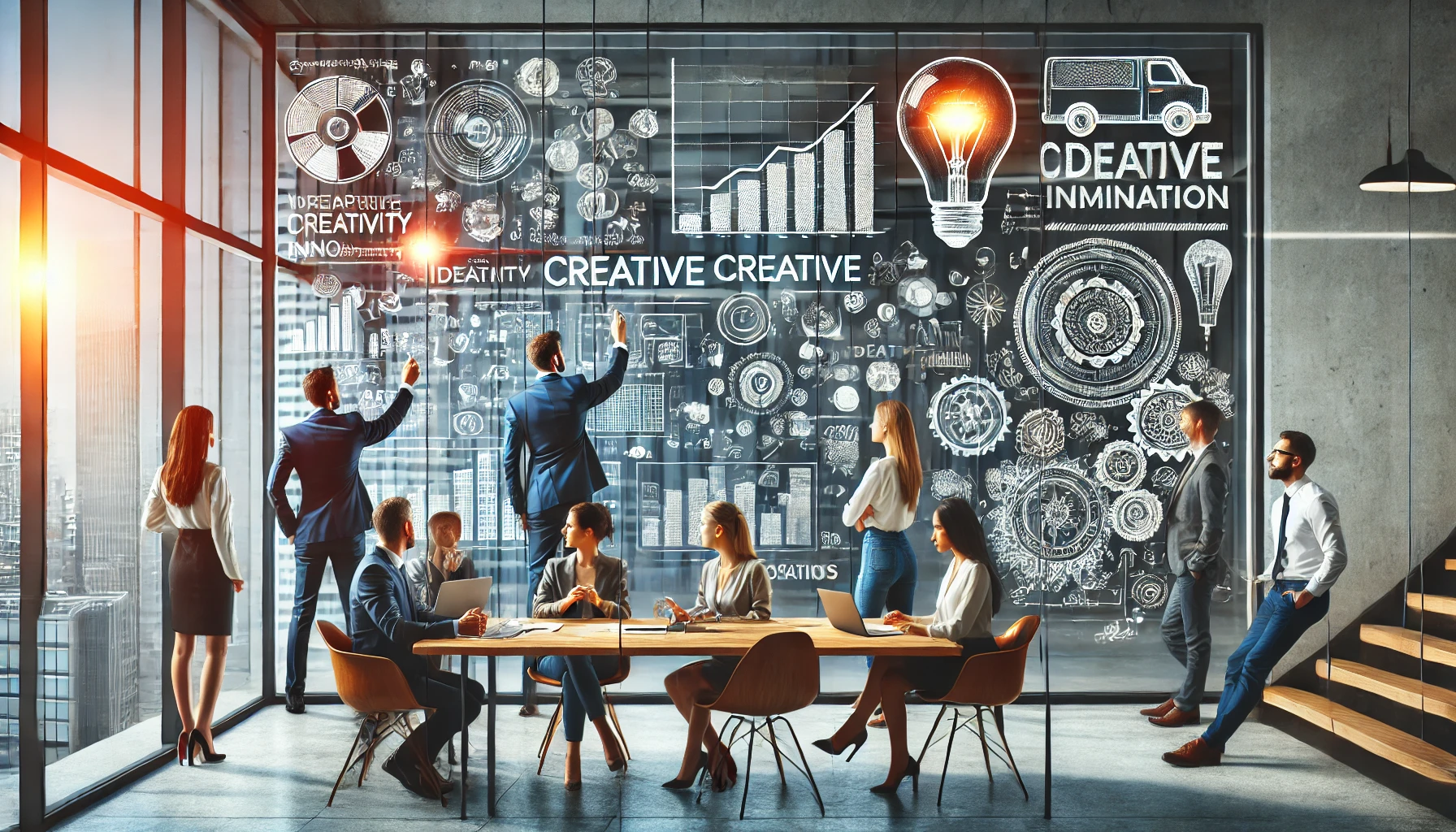In today’s competitive job market, workplace creativity and innovation are essential for professional success. Companies value employees who can think outside the box, develop original ideas, and contribute to problem-solving in innovative ways. Those who embrace creativity are more likely to stand out, advance in their careers, and drive meaningful change within their organizations.
Creativity is not just about artistic skills—it involves finding new solutions, improving processes, and thinking strategically. Innovation, on the other hand, transforms creative ideas into actionable improvements that benefit businesses.
In this article, we’ll explore practical strategies to enhance workplace creativity and innovation, helping you unlock your full potential and accelerate career growth.
1. Cultivate a Creative Mindset
Creativity starts with how you approach challenges and opportunities.
How to develop a creative mindset:
✔ Stay curious and ask questions about existing processes.
✔ Challenge assumptions to explore new perspectives.
✔ Embrace uncertainty as a chance to find unique solutions.
✔ Replace fear of failure with a willingness to experiment.
💡 Example: Instead of following routine procedures, ask yourself how a task can be done more efficiently or differently.
2. Create an Inspiring Work Environment
Your surroundings directly impact creative thinking.
How to design a creativity-boosting workspace:
✔ Use bright colors and open spaces to stimulate ideas.
✔ Incorporate whiteboards, sticky notes, and brainstorming walls.
✔ Reduce distractions and create zones for deep thinking.
✔ Allow for flexible seating and collaboration areas.
💡 Tip: Workspaces that encourage movement and collaboration tend to inspire more innovative thinking.
3. Engage in Brainstorming and Idea Generation Techniques
Creativity flourishes when ideas are explored freely.
Best brainstorming techniques for innovation:
✔ Mind Mapping: Visualize connections between ideas.
✔ SCAMPER Method: Modify, adapt, or replace existing concepts.
✔ Reverse Thinking: Consider opposite approaches to a problem.
✔ Rapid Ideation: Generate many ideas quickly without overanalyzing.
💡 Example: A marketing team struggling with engagement uses mind mapping to generate fresh campaign ideas.
4. Stay Open to Feedback and Diverse Perspectives
Collaboration with others enhances creativity.
How to leverage team input for innovation:
✔ Seek feedback from different departments or industries.
✔ Be receptive to constructive criticism and alternative views.
✔ Encourage open discussions without judgment.
✔ Learn from professionals with unique backgrounds and expertise.
💡 Tip: The best innovations come from diverse teams with varied perspectives.
5. Develop a Habit of Continuous Learning
Creativity thrives on knowledge and new experiences.
How to keep learning and expanding ideas:
✔ Read books, articles, and case studies on creativity and innovation.
✔ Take online courses on design thinking and problem-solving.
✔ Attend workshops and networking events to exchange fresh insights.
✔ Explore different industries to gain new perspectives.
💡 Example: An HR manager studies behavioral psychology to develop innovative employee engagement strategies.
6. Challenge the Status Quo and Take Calculated Risks
Innovation requires questioning traditional methods.
How to foster a culture of innovation:
✔ Identify areas in your workplace that need improvement.
✔ Experiment with new workflows or automation tools.
✔ Present bold ideas with supporting data and reasoning.
✔ Learn from failures instead of avoiding risks.
💡 Tip: Employees who proactively suggest improvements are often seen as leaders.
7. Use Technology to Enhance Creativity
Digital tools make innovation more accessible.
Best tools for creative thinking and problem-solving:
✔ Miro or Lucidchart: Brainstorming and mind mapping.
✔ Trello or Notion: Organizing innovative ideas.
✔ ChatGPT or AI Assistants: Generating fresh perspectives.
✔ Canva or Adobe Creative Suite: Designing creative visuals.
💡 Example: A sales team uses AI-driven analytics to predict customer trends and tailor strategies.
8. Apply Creativity to Problem-Solving and Career Growth
Creativity is most valuable when applied to real-world challenges.
How to use creativity for career advancement:
✔ Approach workplace challenges with innovative solutions.
✔ Showcase creative thinking in presentations and reports.
✔ Take initiative in suggesting process improvements.
✔ Adapt creative skills to leadership and strategic decision-making.
💡 Tip: Professionals who apply creativity to problem-solving become indispensable to their organizations.
Final Thoughts
Enhancing workplace creativity and innovation is key to career growth and professional success. By cultivating a creative mindset, creating inspiring work environments, embracing brainstorming techniques, staying open to feedback, continuously learning, challenging the status quo, leveraging technology, and applying creativity to problem-solving, you can become a forward-thinking leader in your industry.
Start implementing these strategies today and watch your creativity unlock new career opportunities! 🚀

